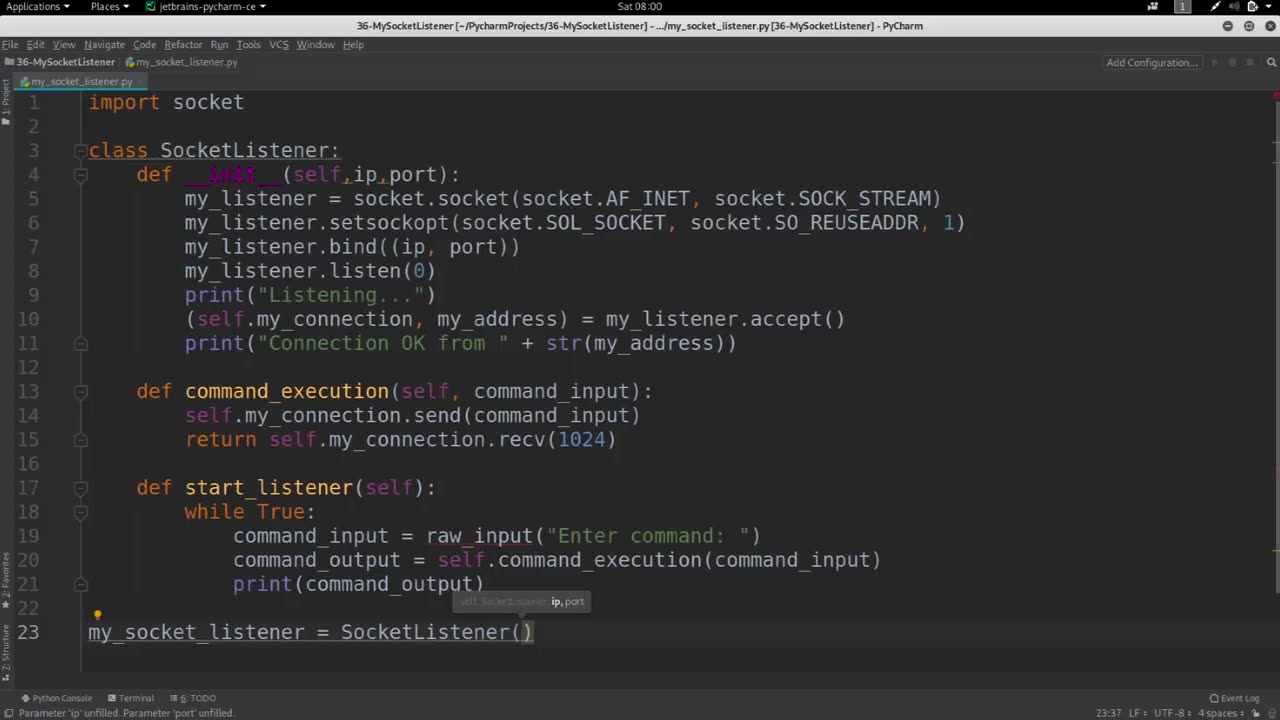Premium Only Content

Chapter-38, LEC-7 | Class Structure | #ethicalhacking #hacking #education
#ethicalhacking #hacking #rumble #virel #trending #education
Subscribe to our channel YouTube channel.❤️
/@thecybersecurityclassroom
Followe me on Rumble.💕
/@the1cybersequrityclassroom
A class structure refers to the organization and arrangement of classes in object-oriented programming (OOP). In OOP, a class is a blueprint or template that defines the characteristics (attributes) and behaviors (methods) of objects that can be created based on that class. A class structure outlines the design and relationships among classes in a software application or system.
A class structure typically includes the following elements:
Class Name: The name that identifies the class, which should be descriptive and indicative of the purpose or nature of the objects that will be created based on the class.
Attributes: Also known as properties or member variables, attributes represent the characteristics or data associated with objects of the class. Attributes are defined as variables within the class and can have different data types, such as integers, strings, or custom objects, to store and represent the relevant data.
Methods: Also known as member functions or behaviors, methods represent the actions or operations that can be performed on objects of the class. Methods are defined as functions within the class and can be used to manipulate the attributes, perform computations, or interact with other objects or external resources.
Access Modifiers: Access modifiers specify the visibility and accessibility of the attributes and methods within the class and from external sources. Common access modifiers include public, private, and protected, which determine whether the attributes or methods can be accessed from outside the class or only within the class or its subclasses.
Inheritance: Inheritance allows classes to inherit attributes and methods from other classes, which promotes code reusability and modularity. Class structures may include relationships such as superclass, subclass, or interfaces to define the inheritance hierarchy and relationships among classes.
Relationships: Class structures may also include other relationships among classes, such as associations, aggregations, or compositions, to define the interactions and dependencies among objects in the system.
A well-designed class structure is essential for creating maintainable, scalable, and efficient software applications. It helps in organizing and encapsulating data and behavior within classes, promoting code reusability, and facilitating effective communication and collaboration among developers. Careful consideration of the class structure is crucial during the design phase of software development to ensure a robust and flexible architecture that meets the requirements of the system.
#hacking #growthhacking #biohacking #ethicalhacking #lifehacking #whacking #hackingout #happyhacking #brainhacking #travelhacking #househacking #brainhackingum #hackingtools
#bushwhacking #hacking_or_secutiy #porthacking#porthacking #belajarhacking #hackinginstagram #growthacking #biohackingsecrets #realityhacking #neurohacking #hackingnews #funnelhacking #mindhacking #funnelhackinglive #hackinglife #termuxhacking #learnhacking #bodyhacking #patternhacking #biohackingsuccess #ikeahacking #hackingorsecurity #russianhacking #traumahacking #shackingup #hackinghealth #growthhackingtips #wifihacking
-
 1:17:52
1:17:52
Dialogue works
3 days ago $10.17 earnedMartin Armstrong: This Is How World War III Starts… And It Already Has
36.4K19 -
 38:16
38:16
daniellesmithab
3 days agoAlberta Update: Getting Kids Back to the Classroom
28.4K11 -
 20:48
20:48
BlaireWhite
5 days agoTrans TikTokers Are Crashing Out (Over Nothing)
32.6K11 -
 2:07:06
2:07:06
Side Scrollers Podcast
22 hours agoHasan Piker CAUGHT LYING AGAIN + Twitch URGES LEFTIST IDEOLOGY + More | Side Scrollers
74.8K11 -
 8:40
8:40
MattMorseTV
18 hours ago $14.34 earnedSchumer just KICKED OFF the Left-Wing CIVIL WAR.
35.8K35 -
 21:39
21:39
Nikko Ortiz
2 days agoI Take A North Korean Shooting
33.5K6 -
 1:46:26
1:46:26
The Michelle Moore Show
21 hours ago'The Religion Invasion In the U.S. and the Deep State Agenda' Guest, Mark Taylor: The Michelle Moore Show (Nov 3, 2025)
41.9K43 -
 LIVE
LIVE
TruthStream with Joe and Scott
5 days agoSovereign Codes & Cosmic Infrastructure,Ufo's, UAP's, Monads, Matrix Satellites, Interstellar Visitors, SYRONA #505
296 watching -
 LIVE
LIVE
Lofi Girl
2 years agoSynthwave Radio 🌌 - beats to chill/game to
141 watching -
 5:55:11
5:55:11
MattMorseTV
14 hours ago $103.92 earned🔴Trump's '60 Minutes' INTERVIEW + MUCH MORE.🔴
165K54